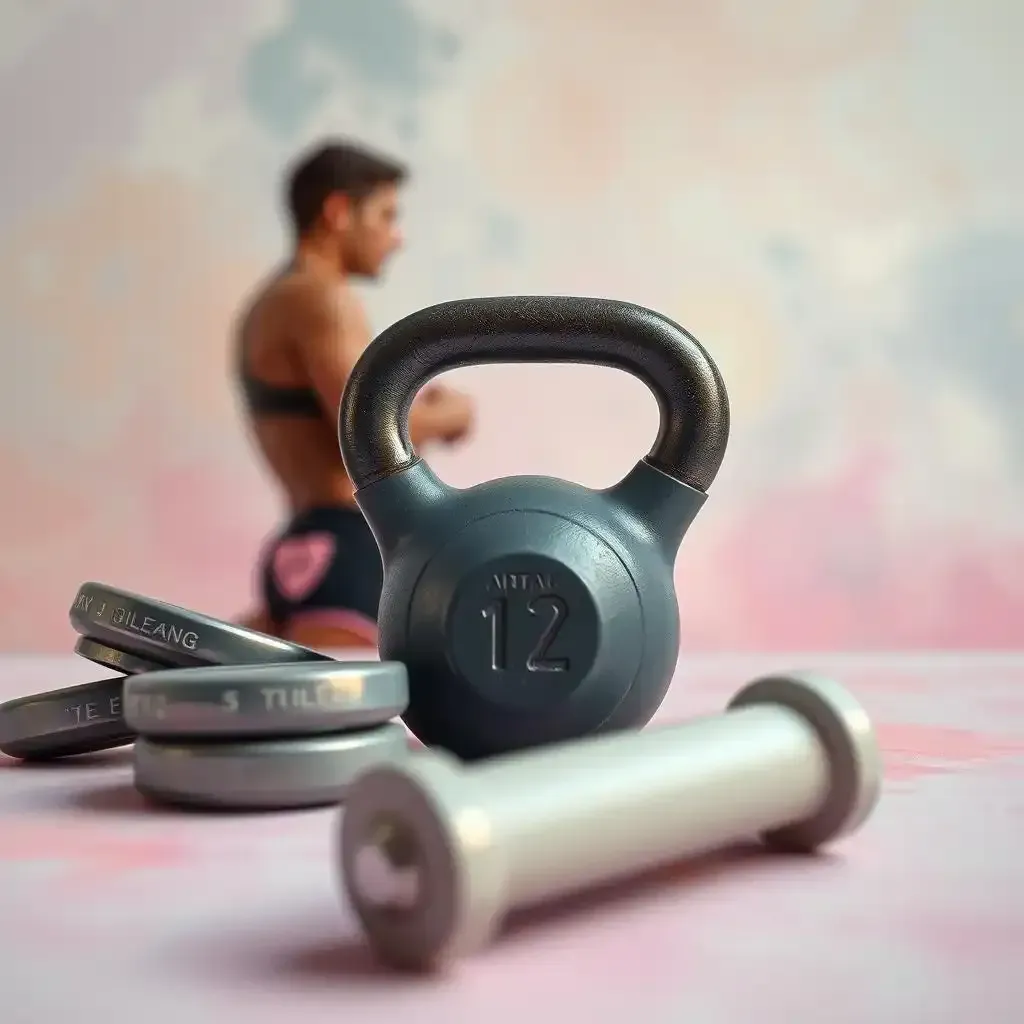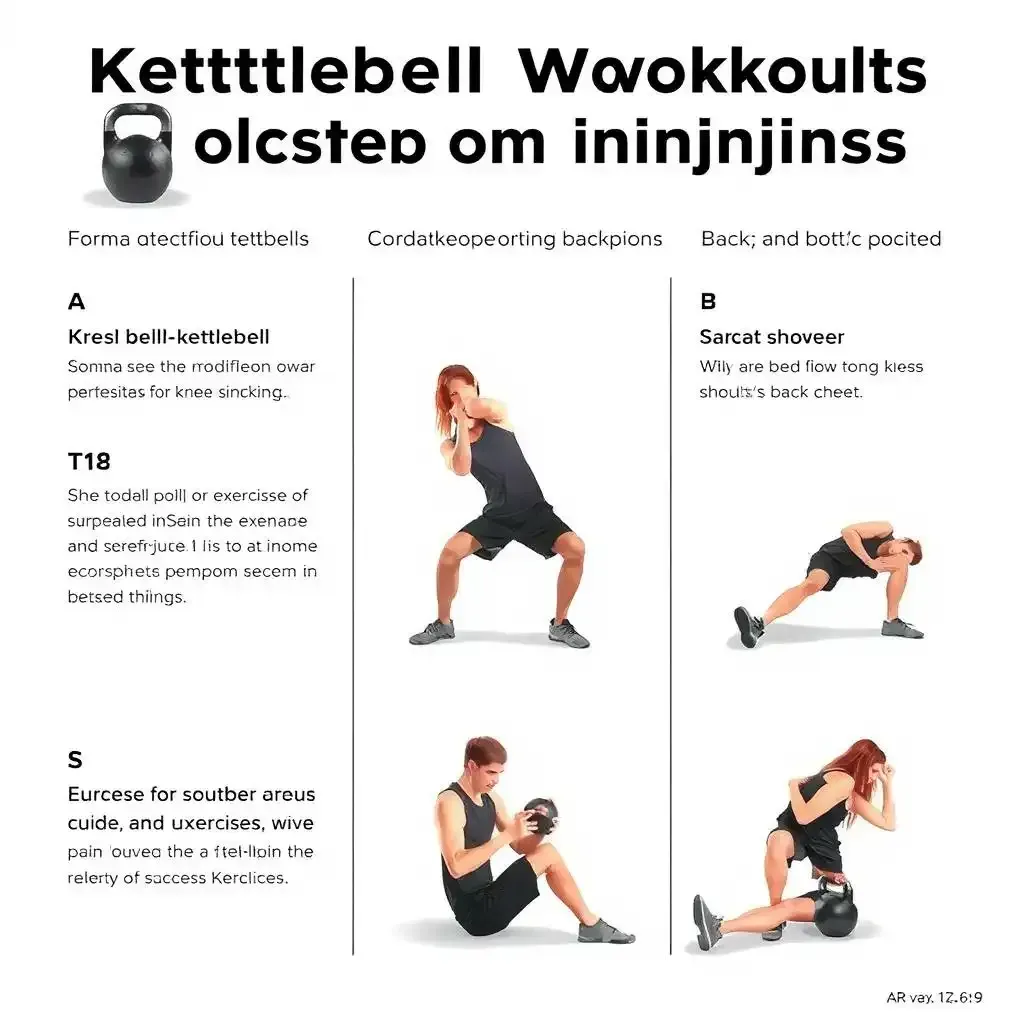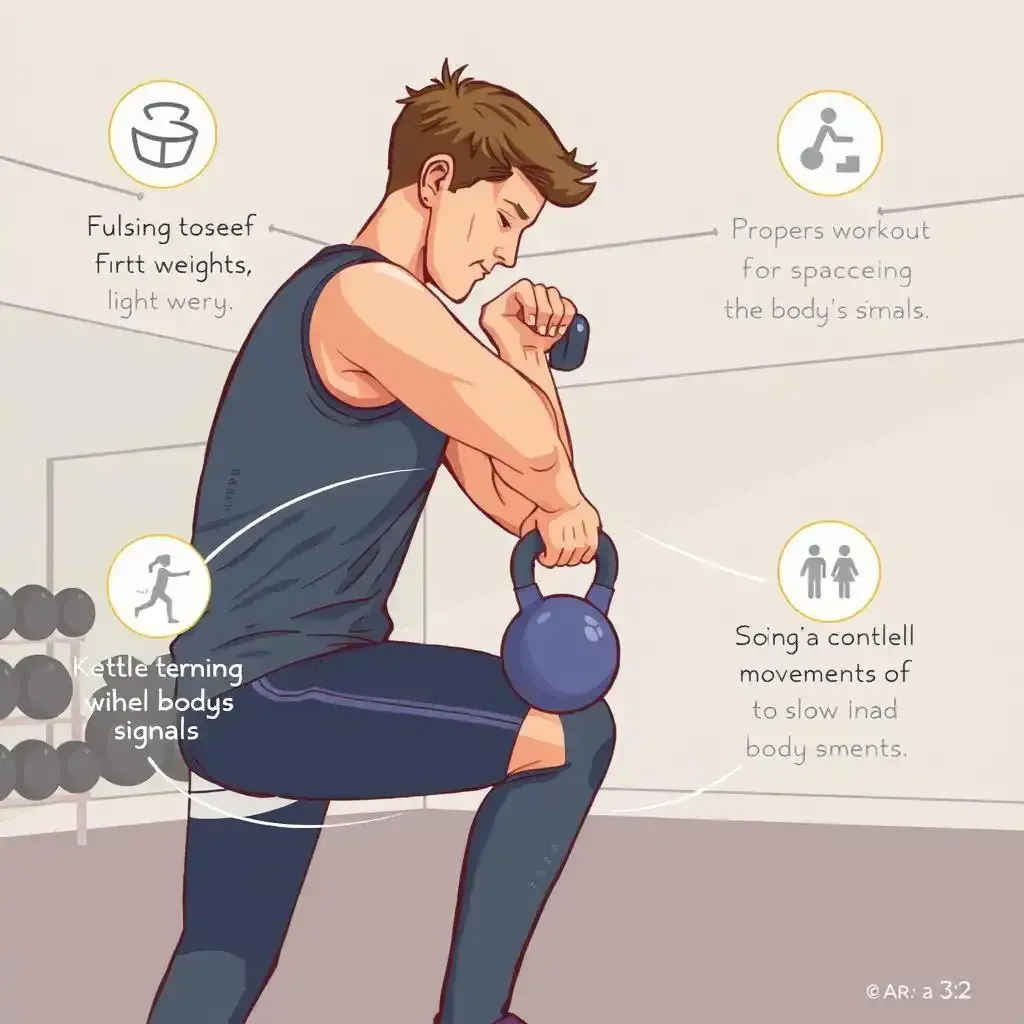Table of Contents
Recovering from an injury can feel like climbing a mountain. It's tough, it's slow, and sometimes you just want to give up. But what if I told you there's a surprisingly effective tool that can help you on your way back to feeling your best? That tool is the kettlebell. Yes, those funny-looking weights you might have seen at the gym. They're not just for powerlifters; kettlebells can be incredibly helpful in injury recovery, offering a gentle yet powerful way to rebuild strength and mobility. This article will explore how to safely and effectively use kettlebells for injury recovery, covering everything from choosing the right weight to selecting the perfect exercises for your specific needs. We'll even touch upon some common injury types and how kettlebell training might help. Remember, always consult with your doctor or physical therapist before starting any new exercise program, especially after an injury. Ready to uncover the ability of kettlebells for your recovery progression? Let's get started! Find more information and helpful resources at kettlebellworkout.homes.
Kettlebell Exercises for Injury Recovery: A Beginner's Guide

Kettlebell Exercises For Injury Recovery A Beginners Guide
Starting Slow and Steady Wins the Race
Hey there, fellow fitness enthusiast! Let's talk kettlebells for injury recovery. Think of your body like a finely tuned engine – after an injury, it needs a gentle restart, not a high-octane race. Kettlebells, used correctly, are perfect for this. We're not talking about swinging a 50-pounder right after a sprain! Start with super light weights – maybe even just the kettlebell itself, without any added weight – focusing on perfect form. It's all about controlled movements. Imagine you're painting a masterpiece; each stroke must be precise. Think of those first few workouts as establishing a solid foundation for stronger sessions later on. This is crucial because rushing things can set you back weeks. Trust me on this one, I learned this the hard way! Don’t worry about how much weight you are using just focus on your form. Check out some beginner-friendly routines on our site to get started: beginner kettlebell routines.
- Start with a weight you can easily manage.
- Focus on slow, controlled movements.
- Listen to your body – pain is a warning sign.
Building Up Gradually: Small Steps to Big Results
Once you've mastered the basics with light weights and perfect form, you can gradually increase the weight. Think of it as building a pyramid – you start with a small, stable base, and each layer adds strength and stability. Don't jump to heavy weights too quickly; that's a recipe for reinjury. Instead, increase the weight in small increments, maybe just a pound or two at a time. You should also increase the number of reps and sets as you get stronger. Remember, consistency is key. Even small, regular workouts are more effective than sporadic bursts of intense activity. I've seen incredible progress in people who stick to a consistent routine, even if it means only 15 minutes a day. Need some inspiration? Check out our easy kettlebell exercises for beginners: easy kettlebell exercises.
Week | Weight (lbs) | Reps | Sets |
|---|---|---|---|
1 | 5 | 10 | 2 |
2 | 7 | 12 | 2 |
3 | 10 | 15 | 3 |
Choosing the Right Kettlebell Weight for Injury Recovery

Choosing The Right Kettlebell Weight For Injury Recovery
Starting Light: Baby Steps, Big Results
Hey there! So you're thinking about using kettlebells for injury recovery? Awesome! But let's talk strategy. Forget those Instagram-worthy videos of people tossing around giant kettlebells. When you're recovering from an injury, you're building back up, not showing off. Start with a weight that feels super light. Seriously, think "could I do 100 reps with this without breaking a sweat?" If the answer is yes, then you're in the right ballpark. This isn't about how much you lift, it's about how precisely you lift. It's about getting your body used to movement again, not about pushing it to its limits. Think of it like learning to ride a bike – you start with training wheels before you tackle a downhill race. Remember, even a tiny amount of weight, done correctly, is better than no weight at all. Plus, you'll avoid reinjury, which is a major bummer.
- Begin with a weight you can easily control.
- Focus on perfecting your form.
- Don’t rush things.
Need some help selecting the right weight? Check out our handy guide: Kettlebell Weight Guide.
Gradually Increasing Weight: The Slow and Steady Approach
Once you're comfortable with a light weight and your form is spot-on, you can start adding weight. But remember, we're talking tiny increases here. Think adding a pound or two at a time. It's like baking a cake – you don’t want to add all the flour at once, otherwise, you’ll get a lumpy mess! Your body needs time to adjust to the increased load. Also, increase the number of repetitions and sets gradually. This is crucial because it lets your muscles adapt and prevents injury. Consistency is your secret weapon here. Short, regular workouts are way better than infrequent intense sessions. I've seen people make amazing progress with just 15 minutes of daily work. It’s about the process, not the destination. Want more ideas for building your routine? Check out some easy kettlebell exercises: .
Week | Weight (lbs) | Reps | Sets |
|---|---|---|---|
1 | 5 | 10 | 2 |
2 | 7 | 12 | 2 |
3 | 10 | 15 | 3 |
Kettlebell Workouts Adapted for Specific Injuries

Kettlebell Workouts Adapted For Specific Injuries
Okay, so you've got an injury – maybe a wonky knee, a grumpy shoulder, or a back that's decided to stage a rebellion. Don't worry, you don't have to hang up your kettlebells just yet! The key here is adapting your workouts. Think of it like this: you wouldn't try to run a marathon with a broken leg, right? You'd find another way to exercise. Similarly, you need to modify your kettlebell routine to suit your injury. This is where things get really interesting. We’re not just talking about reducing the weight; we’re talking about choosing exercises that specifically target the muscles you *can* work *without* aggravating your injury. For example, if your knee's acting up, you might avoid exercises that put stress on that joint. Instead, you could focus on exercises that work your upper body or core. Remember, it's all about smart training, not brute force. Check out our guide to simple kettlebell exercises for beginners, to find some great exercises you can start with: Beginner Kettlebell Exercises.
- Consult your doctor or physical therapist before starting any new workout routine.
- Start with very light weights and focus on proper form.
- Listen to your body, and stop if you feel any pain.
Let’s say you’ve hurt your back. You might initially avoid exercises that involve heavy lifting or twisting movements. Instead, you could focus on exercises like kettlebell halos, which help improve shoulder mobility and strength without stressing your back. Or you could try goblet squats, which work your legs and core while maintaining a stable upright posture. But remember, if you have a serious back injury, you should be working with a professional – both a physical therapist and a certified kettlebell instructor. They can help you develop a safe and effective program that’s personalized to your specific needs. Want to learn more about warming up properly? Check out our warm-up exercises guide: Kettlebell Warm-up Exercises.
Injury | Exercises to Avoid | Exercises to Try |
|---|---|---|
Knee Pain | Deep squats, lunges | Kettlebell swings (modified), rows |
Shoulder Injury | Overhead presses, snatches | Kettlebell halos, rows |
Back Pain | Twists, deadlifts | Goblet squats, rows |
I once had a client who injured his wrist. He was devastated because he loved kettlebell exercises. We worked together to create a program that focused on exercises that didn't put pressure on his wrist. We started with very light weights and focused on proper form, gradually increasing the weight and intensity as his wrist healed. It was slow going at first, but he was incredibly patient and dedicated. He eventually regained full range of motion and was able to return to his full kettlebell routine. This is a perfect example of how to use kettlebells for injury recovery effectively. It’s about finding ways to work around the limitations, not about giving up. Looking for some more advanced routines? Check out our advanced kettlebell routines: Advanced Kettlebell Routines.
- Be patient and consistent.
- Listen to your body and adjust your workout as needed.
- Celebrate your progress!
Safety and Considerations When Using Kettlebells for Injury Recovery

Safety And Considerations When Using Kettlebells For Injury Recovery
Okay, so you're raring to go with those kettlebells, which is awesome! But before you start swinging like a pro (or even a beginner!), let's chat safety. Think of your body as a precious vase – you wouldn't throw it around, would you? The same goes for your injury recovery. We want to help your body heal, not cause more damage. That means starting super slow. Think ridiculously light weights, and focus on perfect form. It's all about quality over quantity. I've seen people try to lift too much too soon, and it's never pretty. Trust me, it's better to take baby steps and avoid setting yourself back.
- Always warm up before you start!
- Listen to your body. Pain is a big, flashing red light – stop if you feel it.
- Don't push yourself too hard, especially in the beginning.
Another thing to keep in mind is your environment. Make sure you have enough space to move around safely. You wouldn't want to trip over the dog or knock over a lamp, right? And get a good, stable surface to workout on. A wobbly floor is a recipe for disaster. Also, make sure you have enough light; you don't want to strain your eyes or injure yourself because you can't see properly. A well-lit and spacious area is essential for a safe workout. Need some helpful tips? Check out our guide on kettlebell safety tips!
Safety Tip | Why It Matters |
|---|---|
Warm-up thoroughly | Prepares muscles for exercise, reducing injury risk |
Use proper form | Prevents strain and maximizes effectiveness |
Listen to your body | Avoids overexertion and potential injuries |
And finally, the big one: If you're new to kettlebells or have a serious injury, please, please, please talk to a physical therapist or a certified personal trainer. They can create a personalized plan that's perfect for you and your body. They'll help you learn proper form and make sure you're not doing anything that could harm your recovery. I know it might seem like an extra step, but it's worth it to avoid setbacks and ensure you're building strength safely. Think of it as getting a professional tune-up for your body's engine – it'll run smoother and last longer!
- Consult a professional before starting.
- Start slow and gradually increase weight.
- Listen to your body and rest when needed.
Final Thought
Using kettlebells for injury recovery isn't a magic bullet, but it can be a valuable part of a comprehensive rehabilitation plan. Remember to prioritize proper form, start with lighter weights, and listen to your body. With patience and the right approach, you can harness the ability of kettlebells to regain strength, improve mobility, and get back to doing the things you love. Remember to always consult with your healthcare provider before starting any new exercise routine. Happy healing!